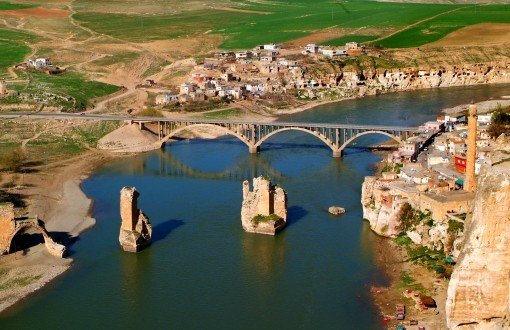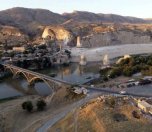Click here to read the article in Turkish / Haberin Türkçesi için buraya tıklayın
Hasankeyf located by border of Batman province and by Tigris river is under direct threat of Ilısu Dam and Hydroelectric Power Plant Project. In case the project in construction is completed, the ancient city will be submerged and most of the archeological remnants will be damaged.
Europe’s leading cultural heritage organization Europa Nostra, and European Investment Bank Institute (EIBI) announced the list in a public event held in Ateneo Veneto in Venice of Italy.
Hasankeyf with the support of Hasankeyf Matters and Keeping Hasankeyf Alive Initiative was nominated by Cultural Awareness Foundation.
Other six places in the list are as follows: The Archaeological site of Ererouyk and the village of Ani Pemza in Armenia, Patarei Sea Fortress in Tallinn inEstonia, Helsinki-Malmi Airport in Finland, Colbert Swing Bridge in Dieppe inFrance, the Kampos of Chios in Greece, the Convent of St. Anthony of Padua in Extremadura in Spain,
Hasankeyf Hasankeyf, sitting on the banks of the River Tigris, is one of the most important architectural and archaeological sites in Europe, boasting a rich biodiversity and 12,000 years of human history. Masterpieces of Islamic architecture, dating from the 12th to 15th centuries C.E., make the town one of the best preserved witnesses to Seljuk urban culture, particularly from the Artukid and Ayyubid dynasties.
In addition, Europa Nostra and the EIB Institute - following a firm recommendation from an international advisory panel of experts - decided that the Venice Lagoon in Italy should be declared the most endangered heritage site in Europe. |
They need support
Maestro Plácido Domingo, President of Europa Nostra, stated: “This list spotlights rare examples of Europe’s cultural and natural heritage that are at risk of being lost forever. The local communities are firmly engaged in trying to save these testaments to our shared story but need widespread support.
On behalf of Europa Nostra, I urge national and European stakeholders, both public and private, to join forces with us to ensure a promising future for these sites. Rescuing our common heritage brings countless social and economic benefits not just for the regions and the countries involved but for Europe as a whole, as has been increasingly recognised by EU institutions and is clearly demonstrated in the recent report ‘Cultural Heritage Counts for Europe’”. (NV/TK)






